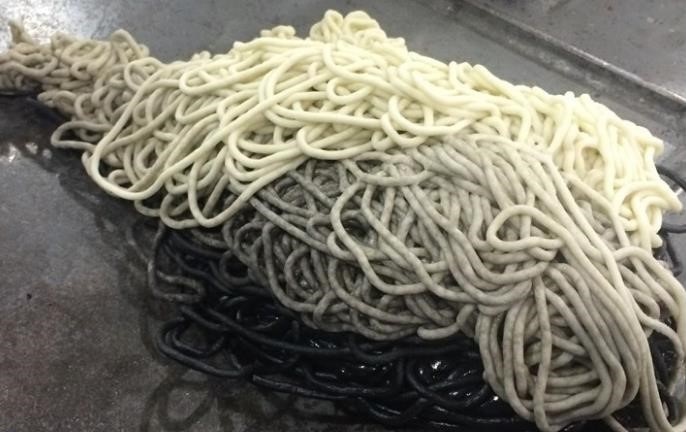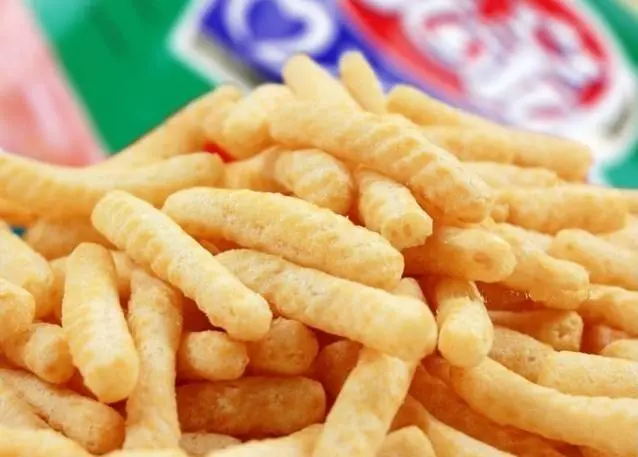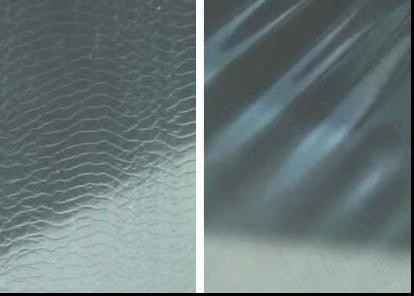
How to clean a twin screw extruder
- Updated on July 23, 2022
For a long time twin screw extruders (TSEs) have been a compounding machine due to their superior performance and customizability. They can handle almost any resin and combine different additives and fillers to achieve different particle sizes and shapes with different properties.
While there are countless combinations of end products that may be obtained, certain methods of obtaining these products can also lead to contamination problems and low flow or low pressure in many areas throughout the barrel. In a continuous process like extrusion, contamination can have a detrimental effect. Purge in extrusion tends to be more challenging than other processes, and TSE presents an even greater challenge because the system is more complex than a single-screw extruder.
This article will go through some of the specific challenges of purging in twin screw extrusion. Change-over, contamination, screw-push and extended downtime are the four biggest handling issues engineers face in compounding plants.
Tip 1: Do not purge the extruder with production resin, regrind, or additives.
Production resins are not designed to clean machines, nor are they a replacement for commercial cleaning compounds. Cleaning the extruder with the next resin or regrind is time-consuming, wasteful, and doesn't help at all to remove color and carbon contamination.
Many processors are trying to use low-melting polyethylene to replace engineering resins, including nylon, styrene and ABS. These resins inevitably decompose and form massive carbon deposits.

Tip 2: Choose the most suitable cleaning compound.
Introducing a cleaning program can easily help a mixing plant reduce downtime by 50 to 75 percent. However, there is no one-size-fits-all process or solution for purging compounds when it comes to cleaning twin-screw extrusion equipment. Carbon can build up in the dead spots of the machine: mixing zones, molds, downstream equipment, etc. These are low flow areas and will require treatment with chemical purification compounds. However, if you're doing frequent repairs, you might also need a powerful cleaner.
Without the correct cleaning agents and procedures, your risk of scrap rate increases. But determining the right level of purge compound isn't just about eliminating color and carbon contamination, it's about the impact on your bottom line. Taking a holistic approach will help you improve efficiency and profitability. When you contact a purification expert for a free consultation, there are a few key things they need to consider in order to choose the right grade and amount of the best purification compound for your system. Some of these issues include:
- What is the size of the extruder?
- Which resin are you using?
- What is your processing temperature?
- What is the intended use of the decontamination compound?
- What problem are you currently experiencing?
The answers to these questions are crucial. Using the right cleaning compound can effectively remove all contamination, increase uptime and productivity, help you maximize operational efficiency.
Mechanical and chemical cleaning types can help twin screw users get rid of their machine contamination. Mechanical cleaning compounds do an excellent job of safely scrubbing screw and barrel surfaces. However, cleaning performance is largely limited to surfaces over which the substance flows with considerable pressure. Mechanical purge works perfectly for twin screw machines using simple screw types and mixing elements.
However, for proper cleaning in low pressure areas (such as vents) or hard-to-reach areas (found on more complex spiral mixing elements), chemical cleaning will give better results. Chemical cleaning compounds achieve cleaning by measuring the chemical reactions a machine contains during soaking. Gases from chemical reactions quickly enter hard-to-reach areas that can be considered low pressure or low flow (often referred to as dead zones or dead spots) that otherwise might not be physically scrubbed directly by a mechanical stage. Knowing how the material flows in a specific screw type, while identifying the high and low pressure flow paths, can help the processor decide which type of purge is best for a particular twin screw setup.
Tip 3: Apply preventive cleaning.
Many users only use cleaning agents when absolutely necessary. However, this removal strategy leads to lower profits and efficiencies. This usually happens when users are running on tight deadlines or they have limited clearance budgets. Some people consider their screw to be "self-cleaning". Self-cleaning screws do not visibly remove contaminants. Even though the twin screw design is "self-wiping", the screw design does not have any significant effect on the removal of contaminants. Due to shearing, a lot of heat is generated and contamination can occur anyway.
Preventative purging practices not only saves your equipment from downtime, but also reduces scrap rates, customer rejections, and extrusion downtime. You can't wait until the last minute to start cleaning compounds, because by then, you'll already be annoyed with contamination issues or color streaks. Experts agree that changeover is the biggest problem to composites manufacturers. Regular use of cleaning agents can prevent contamination.
Typically, only one to two buckets of cleaning-capable compound is needed to prevent contamination. Preventive cleaning saves time and money through efficient use of capacity and prevents unplanned downtime. There are three main benefits to implementing a preventive maintenance program and cleaning process in your facility:
- Prevent color build-up and carbon pollution;
- Reduce excessive cleaning time and material waste at the end of a production run;
- Limits how often the screw is pushed in, minimizing the time and effort required to pull out and manually clean the screw.
Tip 4: Make sure you are optimizing screw thrust for easy removal.
If switching is the biggest challenge for an extruder, screw thrust is a close second. Sometimes a product change requires you to replace a screw element, which can be time consuming if the screw is not in the ideal disassembly condition. Many compounding customers produce several resins or the same resin with different additives. Often, different screw designs are required to compound different resins. Essentially, most polymers tend to stick to the screw surface, and these layers present a challenge not only to screw cleaning, but also to screw removal.
A typical extruder operator might pull screws 4-5 times a week. Those who produce masterbatches probably pull screws every day. Some factories may have duplicate screws, but these can cost tens of thousands of dollars in additional capex. For most extruders, pulling the screw and cleaning it may be the only option to get it back into production again. This process can be labor-intensive and incredibly costly, as downtime can cost $1,000 to $1,200 per hour.
The material buildup on the auger is difficult to remove. You can choose a way that does not require an oven, wire brush, fire, etc. to clean the screws. These secondary processes also increase the likelihood of damaging or accidentally destroying expensive screw components.
There are three main reasons to pull screws out:
- To ensure 100% no polymer cross-blending;
- To switch a different screw design;
- Severe contamination cannot be removed by normal cleaning.
Tip 5: Know well the screw design and extruder settings.
Some of these cleaning challenges are exacerbated by the fact that TSEs are modular and offer infinite combinations of screw sections and different mixing zones. To maintain a consistent melt temperature, melt flow, mixing and shearing requires close attention to many machine settings and mixing factors. This leaves a lot of room for contamination. In rows with additional feed streams, the margin of error will increase exponentially. Once contamination begins, it is nearly impossible to stop it without active intervention (usually by pushing the screw or using a cleaning agent).
Both twin-screw and single-screw extrusion face common challenges in low pressure extrusion processes. These processes do not have the same options for controlling pressure and turbulence as injection molding processes. Many twin-screw machines also rely on proper ventilation to help achieve proper mixing, fusion, or chemical reactions required for the final product. These vents can provide lower pressures in these specific mixing areas and can lead to proper removal of more difficult product.
To maximize cleaning performance, follow the supplier's recommended machine settings. Settings are very important. Without the correct settings, your scavenging compounds will not activate properly and will reduce your benefits. Using the correct settings will activate the optimum cleaning power of your chemical wash.
Tip 6: Super engineering resins and heat-sensitive resins require special attention.
As compounders create new resins that can withstand more extreme conditions, they need to be careful to avoid contamination. For "super-engineering" resins such as PEEK, polyetherimide, polysulfone, etc., scrap and downtime have a devastating impact on profit margins. A common challenge people may face is temperature changes. We always recommend that you convert to resin in the lower processing temperature range.
Low-temperature resins have similar concerns about carbon. When dealing with heat-sensitive resins like PVC or EVOH, watch out for degradation and contamination. These resins degrade easily. Controlling the process temperature is important because high temperatures can lead to degradation and low temperatures can lead to excessive shear. With less heat-sensitive material, the polymer left in the machine will degrade over time, but in the case of PVC, the degradation occurs immediately. This is a very serious processing problem.
To work effectively, cleaning compounds do need heat and sealing, so it's important to get enough heat to do a good cleaning, but not burn any resin left in the barrel. It is important to perform the initial purge at the processing temperature of the resin. Do not increase the temperature inside the barrel until you are sure all the PVC has been removed. When it comes to heat-sensitive materials, extra steps do need to be taken, but they can be cleaned very efficiently using this method.
Tip 7: Seal the machine with a heat stable compound every time you stop.
In addition to regular preventive maintenance cleaning, use a heat-stable cleaning compound for temporary or long-term closure and sealing, especially on weekends or holidays. During shutdowns without purging, oxidation occurs, which can cause contamination, delay startup and prolong machine downtime. These purification levels create an "air tight" environment in the barrel and facilitate further cleaning during downtime.
Idle production lines typically require a temperature around 200 degrees Celsius (392 degrees Fahrenheit). Oxidation problems often occur at start-up when sealing with conventional processing resins. This is one of the most avoidable processing problems in your extrusion plant. If you're not running 24/7, a good shutdown cleanup would be a great solution.
Leave us a comment below for a further discussion or contact us for further clarification.









